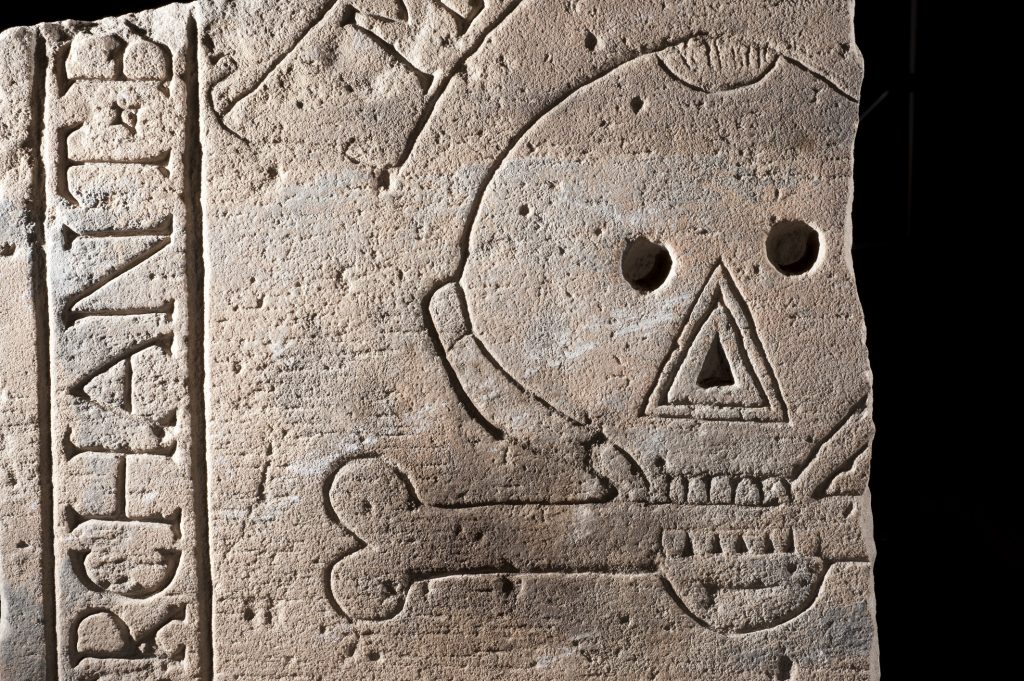Our properties are awash with stories of spooky sightings, tragic tales and evil deeds. But it’s not just the buildings that have a dark side. Nestled amongst our collections are mementoes of death and the dearly departed, the supernatural and the strange. And what better time to blog about these items than Halloween?
There are many theories surrounding the history of Halloween, but most can be traced back to Pagan ceremonies marking the change of the season. Perhaps the emphasis on death and the deceased was linked to darker days and the death of plants and crops.
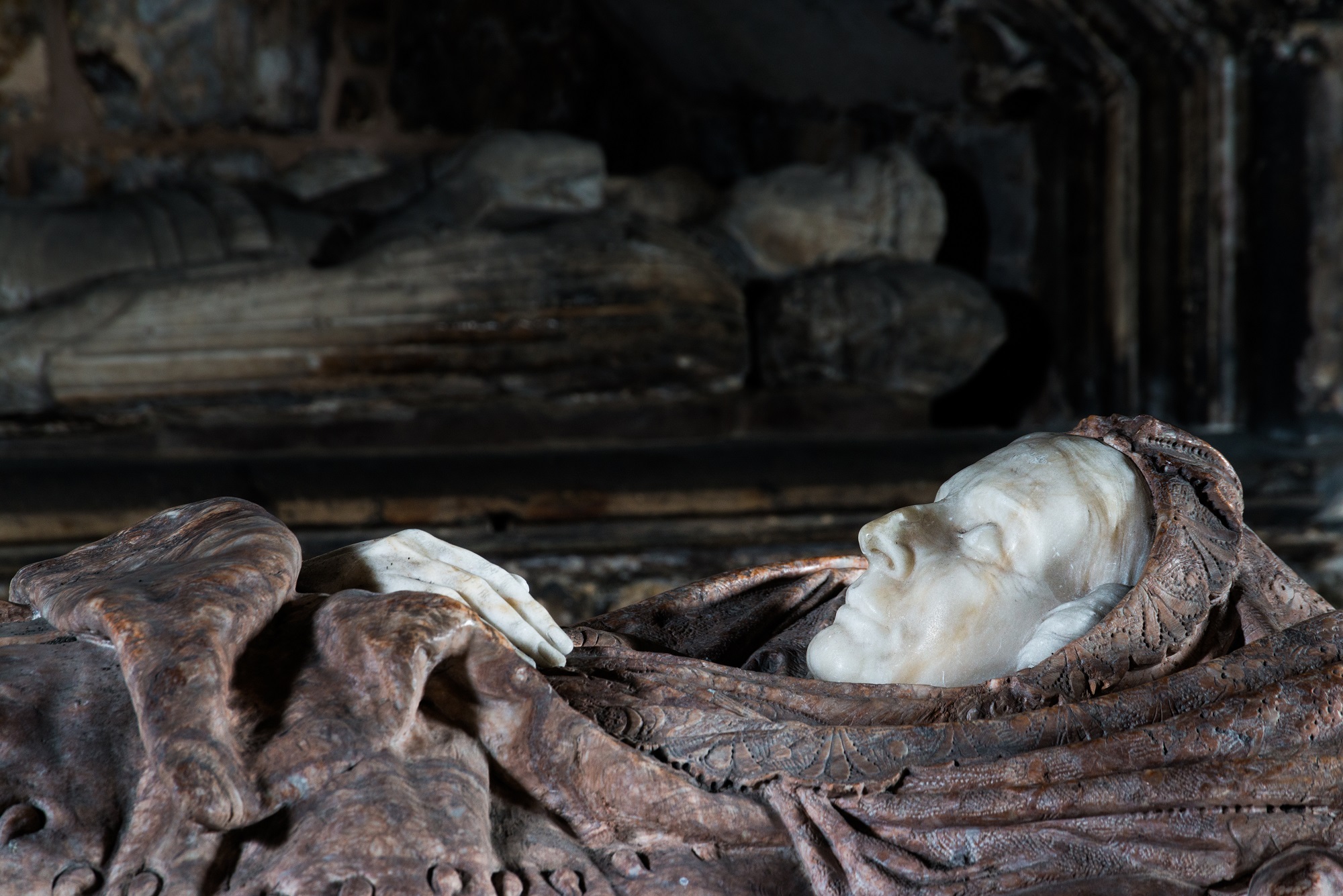
A particularly scary looking effigy of the 7th countess of Home at St Bride’s Church, Douglas
During this time, it was believed that the boundary between this world and the next thinned. With the arrival and spread of Christianity, elements of Pagan customs were merged with Christian ones. October 31st – November 2nd are collectively known as Allhallowtide, a time for remembering the dead.
Grave stones
Commemorations for the deceased is something that is well represented in our collections. We care for 780 funerary stones, most of which were erected as grave markers. These range from early Christian boulders with simple incised crosses, to medieval and post-medieval large-scale slabs with elaborate designs.
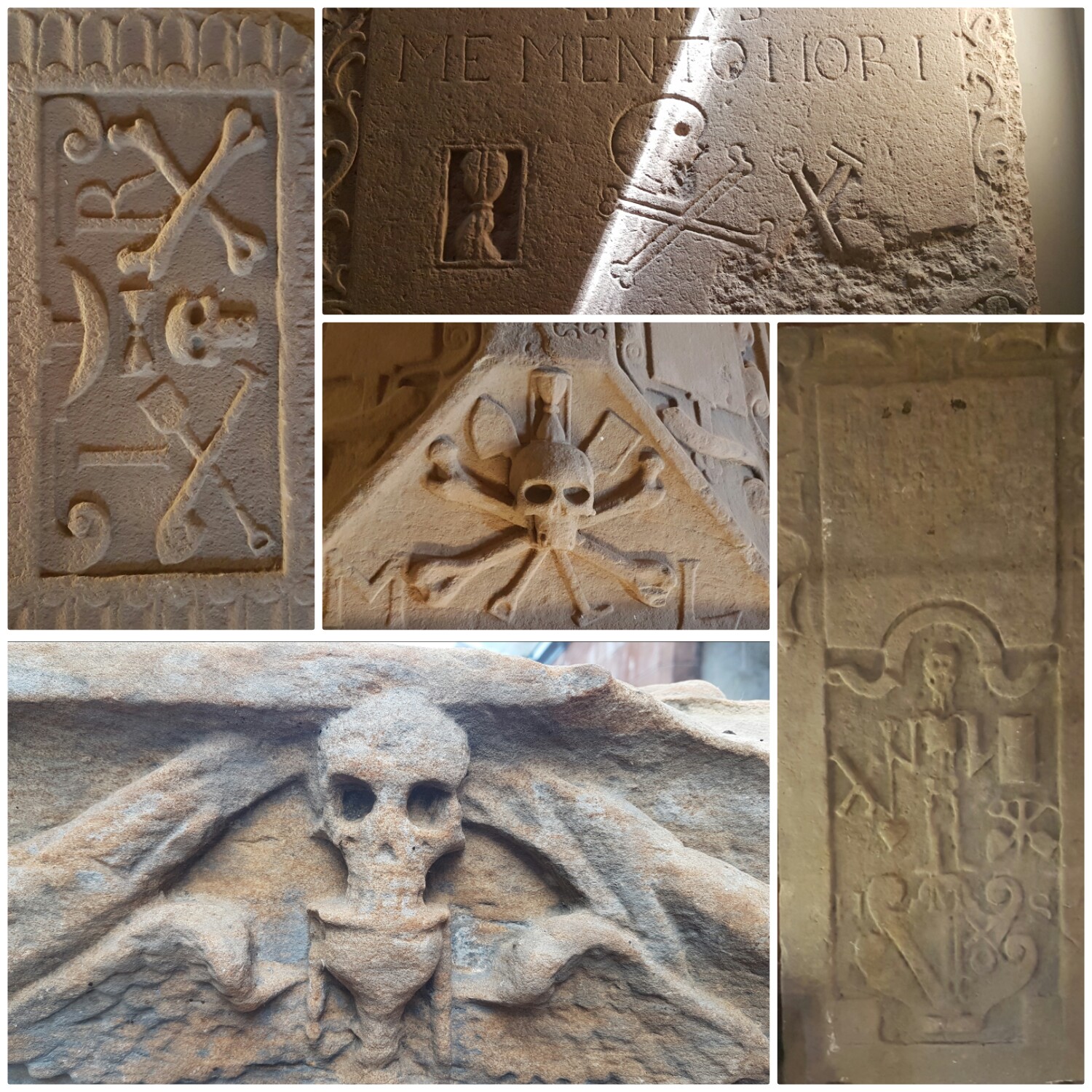
Tombstones from St Andrews Cathedral, with skull and cross bones and hour glass carvings.
Before the Reformation, grave markers were reserved for the wealthy and would be found inside the church itself. The practice of burying the dead inside churches was banned following the upheaval of the latter part of the 16th century, and towards the end of this period more commemorative stones began to appear in churchyards. During this era the theme of mortality was widely depicted on tombstones. Numerous examples of this can be seen on display at St Andrews Cathedral. Motifs include skulls and skeletons to serve as a reminder that death comes to everyone, and hour glass figures to mark the passage of time. Several also bear the stark phrase ‘Memento Mori’ (‘remember that you must die’).
Coffins and bones
Amongst our archaeology collections we have fragments of coffins and coffin fittings, grave goods which were buried with the deceased for use in the after-life, and even skeletons discovered during excavations.
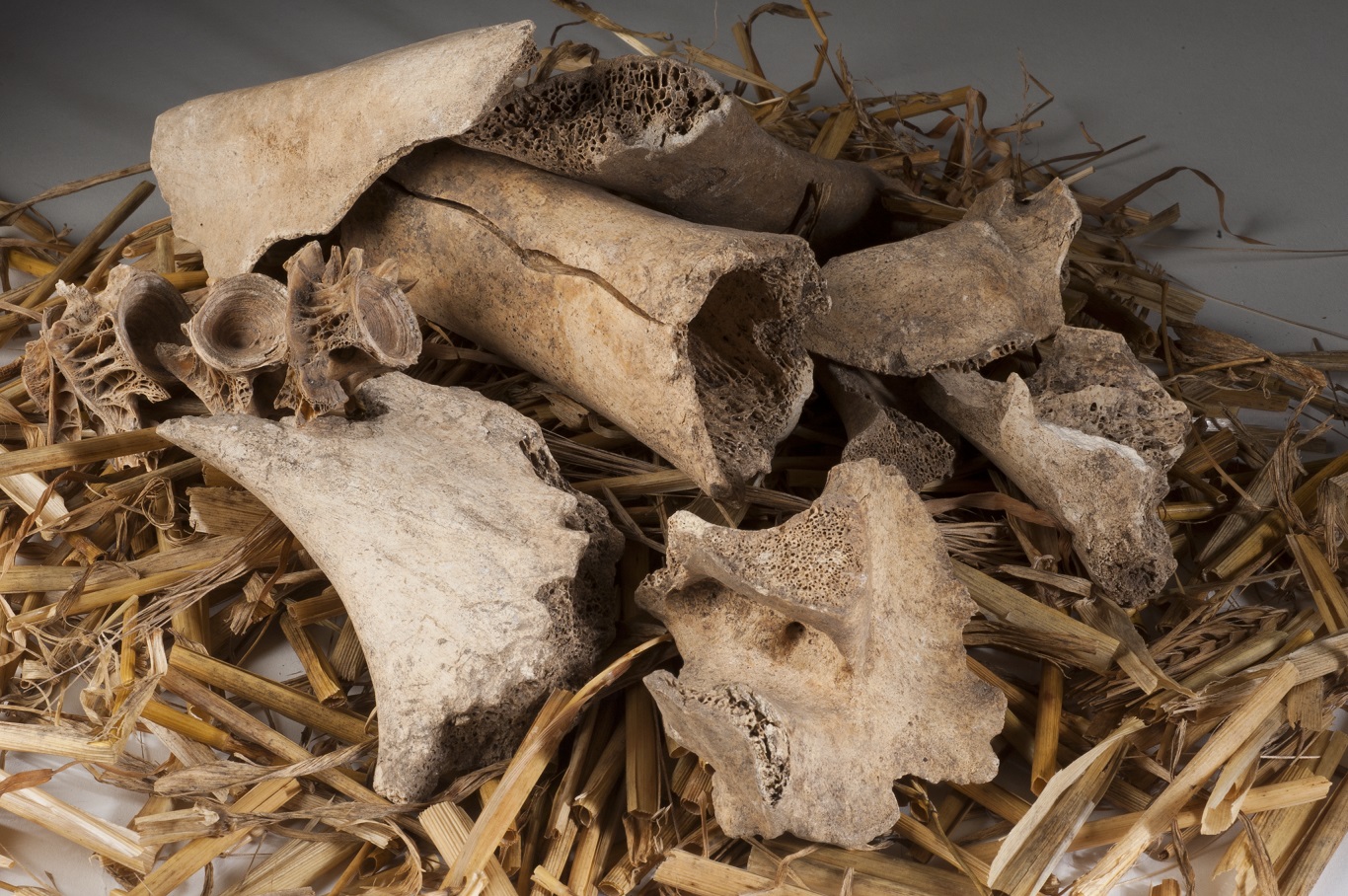
A pile of animal bone fragments found at Urquhart Castle.
From our Abbeys in the south, we have two medieval lead ‘head burial’ caskets which, as the name suggests, were for the interment of just the head. Examination of one of these caskets in the 20th century found that it still contained bone and teeth. Decapitation was usually the result of judicial punishment or warfare, but sadly we do not know who these individuals were, so can only speculate about the circumstances surrounding their deaths.
Preventing graverobbers
Burial was an important practice, but in the post-medieval period people were also concerned with ensuring that the dead stayed buried. This was not for fear of a zombie apocalypse, but rather for fear of grave robbers. With the pursuit of scientific knowledge came a fascination with dissecting the dead for anatomical research. Demand for corpses outstripped supply, and a black market emerged. In response to this, methods of securing graves were developed including the ‘mortsafe’, an iron cage that was placed over the grave of the recently deceased to stop body snatchers.
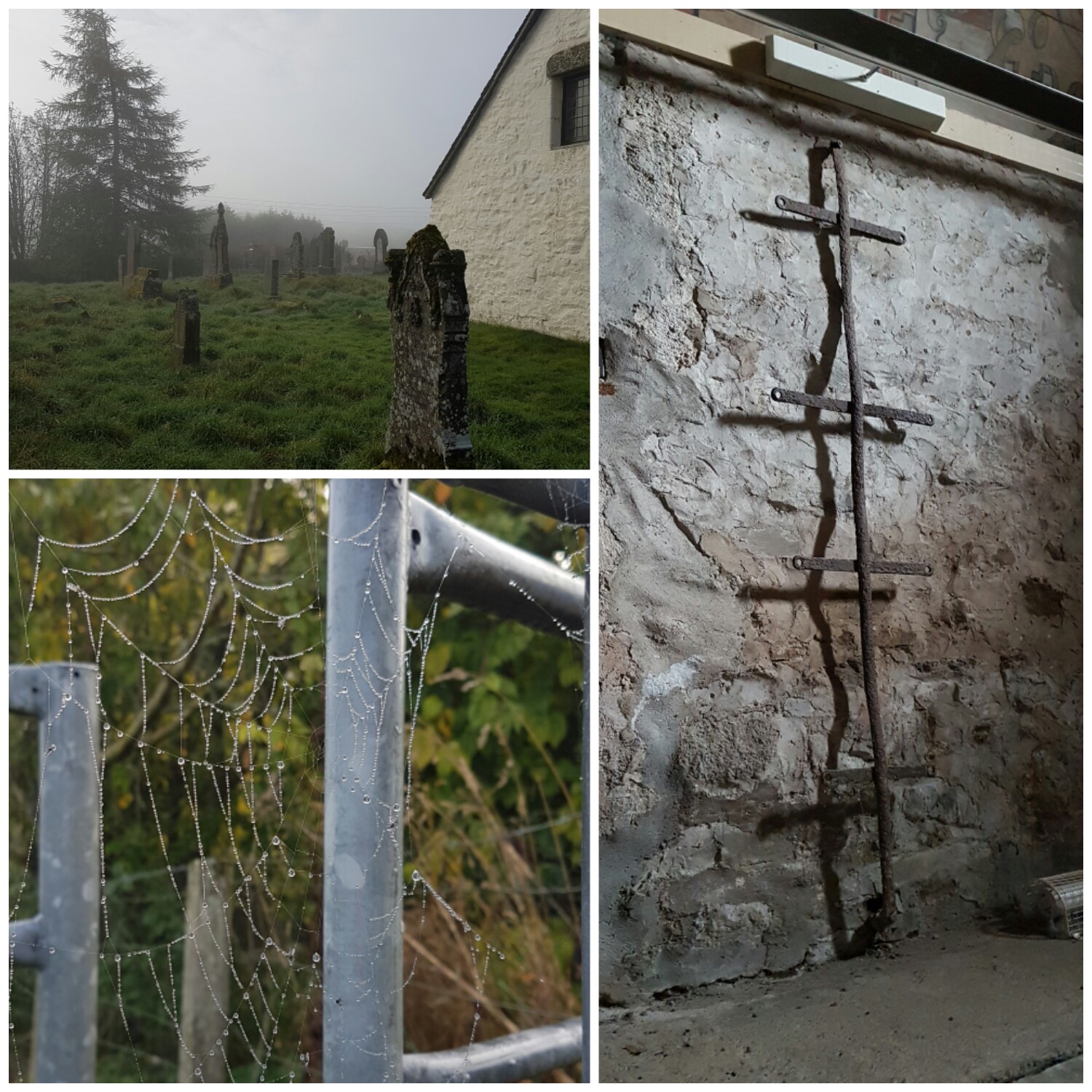
A partial mortsafe displayed on the wall inside the church at St Mary’s Grandtully.
Deliver us from evil
So what about ghouls and ghosts, black cats and bats? Well material evidence for the supernatural can be limited; such practices have often been illegal and feared in history. Amongst our collections are items designed to protect their owner from such evils. These include a hand guard from an early medieval rondel dagger with an inscription in Lombardic, reportedly a charm to protect the owner, and a 19th or 20th century ‘witch ball’ – an item traditionally hung in windows to ward off evil spirits.

Hand-guard from a rondel dagger with a Lombardic inscription around the edge. This object was excavated at Caerlaverock Castle.
When it comes to researching our collections, we’ve only touched the tip of the iceberg. Who knows what other mysterious items await to be uncovered?
Happy Halloween from the collections team!
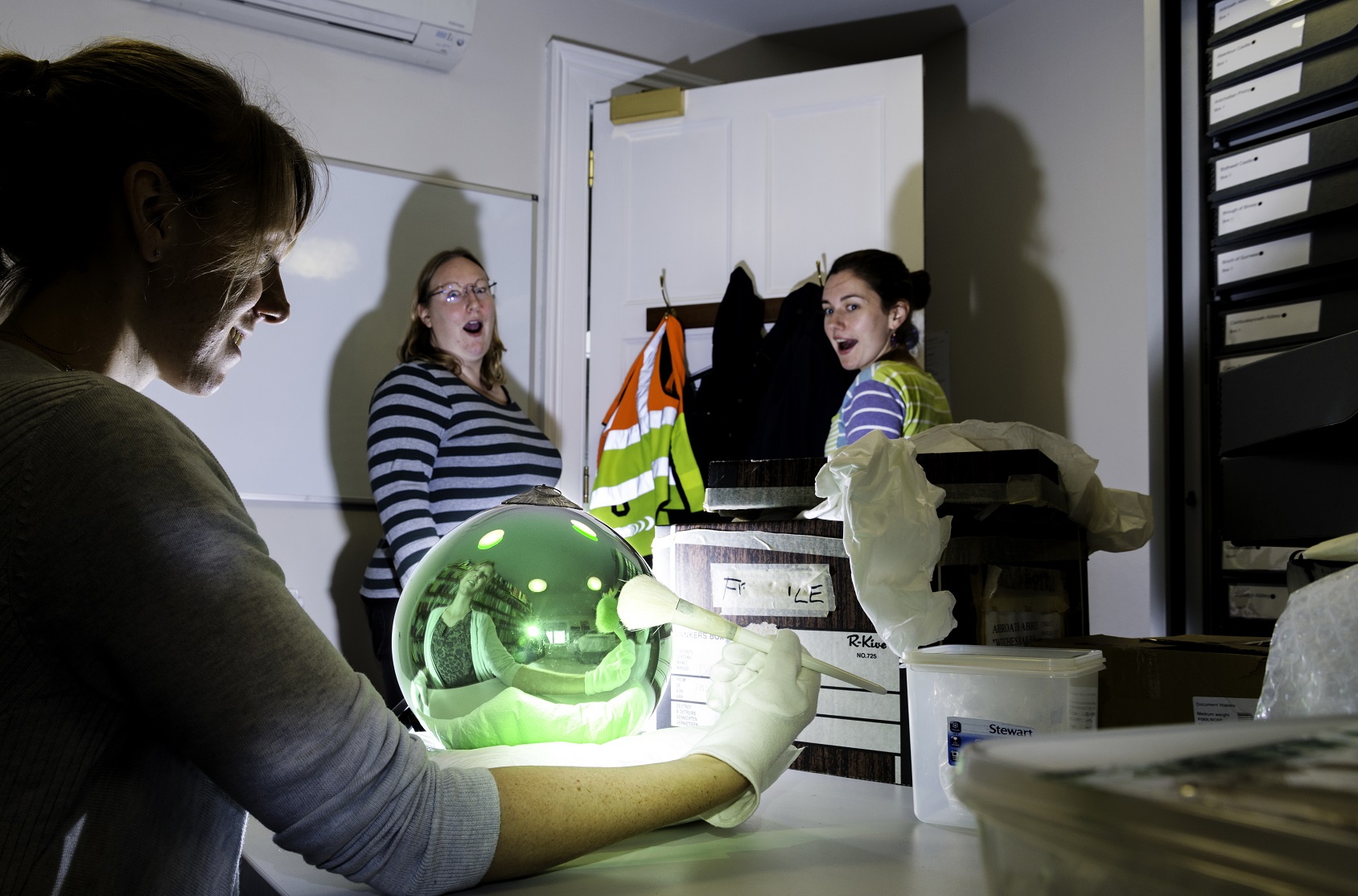
Members of the collections team trying out the ‘witch ball’

